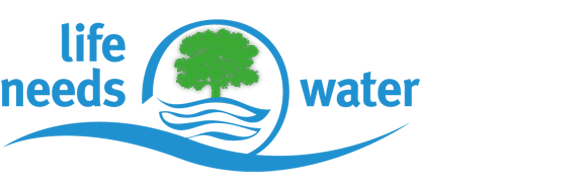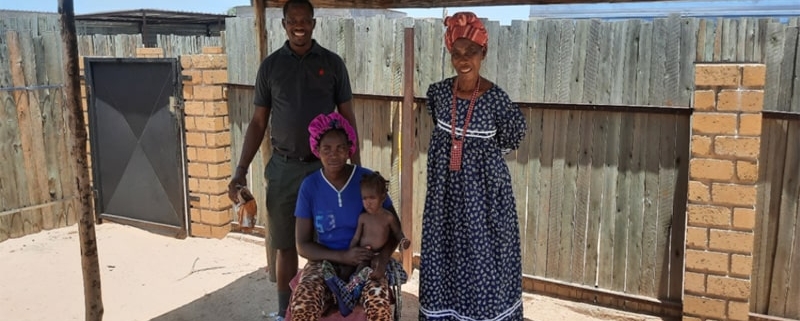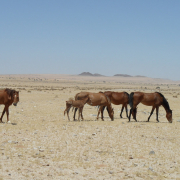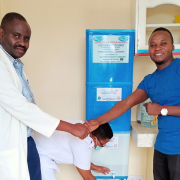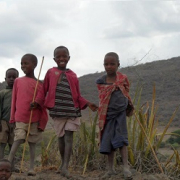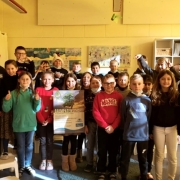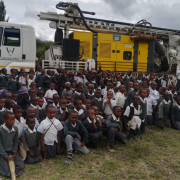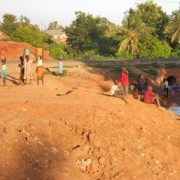Project: Well for Omuthya – Namibia 2025
PROJECT DESCRIPTION
SOURCE OF LIFE – Because Every Drop Counts! – LJ AURACH – AUSTRIA
(WATER & FOOD for People in OMUTHYA – WEST Village)
PROJECT NAME:
WATER & FOOD for People in Omuthya – WEST Village, Omuthya Region – NAMIBIA
Objective: Establishment of a well system
1. for the people of the village community
2. for the creation of a fish pond
3. for irrigation of a vegetable growing area
For the LNW team, EDUCATION is the key to success in all our projects. In the project mentioned above, the focus is not only on providing water to the surrounding population but also on implementing an educational program for fish farming. In addition to education on fishing, participants will also receive knowledge about basic accounting to help them eventually create small EPU businesses.
This new business idea is intended to offer young locals a realistic opportunity to lead independent and self-determined lives in their own country in the future.
The goal of the educational program is to start the cycle of overcoming poverty in Namibia with
WATER – LIFE – EDUCATION – WORK!
LOCATION: OMUTHYA West Village
OMUTHYA West Village is located in the north of Namibia near the border with Angola. The nearest town is ENDOLA, which is about an hour’s drive from the project area. The project area covers a radius of 20 km² and is divided into the main village and three surrounding sub-areas, which can be reached via drivable gravel roads. The district town of ONDANGWA is of great importance for accessibility as it has essential infrastructure.
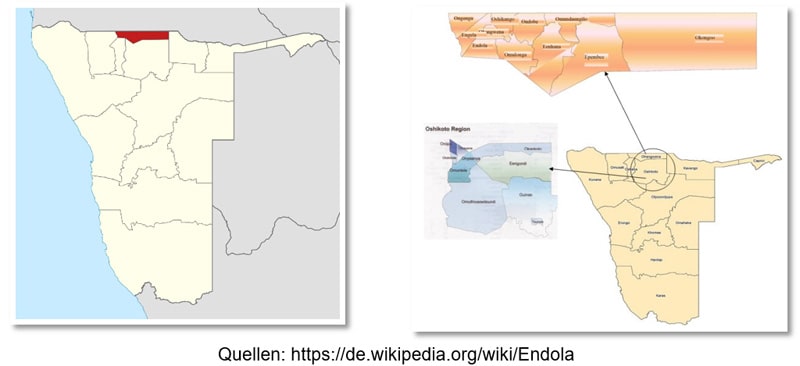
The district town of ONDANGWA is located in the ONDANGA region in northern Namibia and is part of OVAMBOLAND. As of 2011, the town has 21,100 inhabitants and can be reached by car on paved roads or by airplane from EROS Airport in WINDHOEK.
OVAMBOLAND has been historically referred to as the homeland for the Ovambo people since 1972 and is a geographical area in Namibia. The term originates from the German colonial period and the time of South African occupation but is now almost exclusively used by the Ovambo themselves and all other ethnicities in Namibia.
The region differs from the rest of Namibia in that it allows vegetable farming, and therefore has a significantly higher population density than the rest of the country. OVAMBOLAND is sparsely developed for tourism, is arid, poor, and remote.
LAND AND PEOPLE: OVAMBOLAND – Namibia
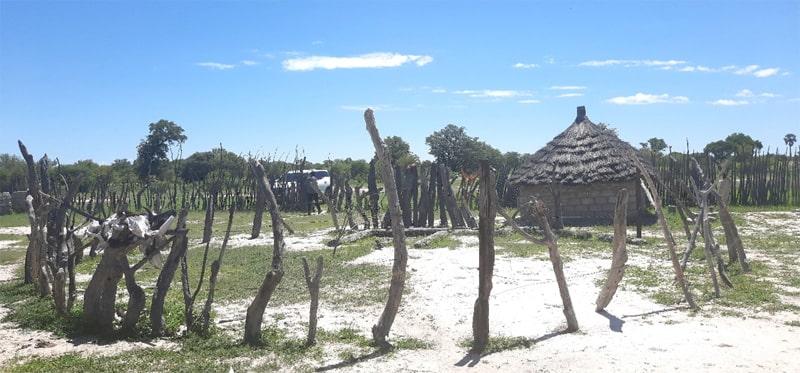
The Ovambo people make up the largest ethnic group in Namibia, accounting for approximately 50% of the population. Today, some traditional villages still exist in Owambo Land, where the houses are hidden behind wooden fences. The villages also maintain the social order that has held the Ovambo community together for so long.
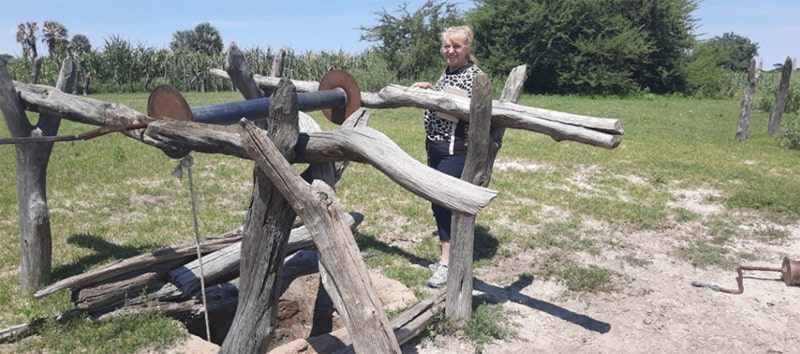
Visitors are greeted at the village fence before they may enter. The fence also serves to keep the livestock in check, as the village is surrounded by farmland where residents grow beans and millet. When guests are welcomed, they sit in the meeting garden where discussions can take place with village elders or the village council.
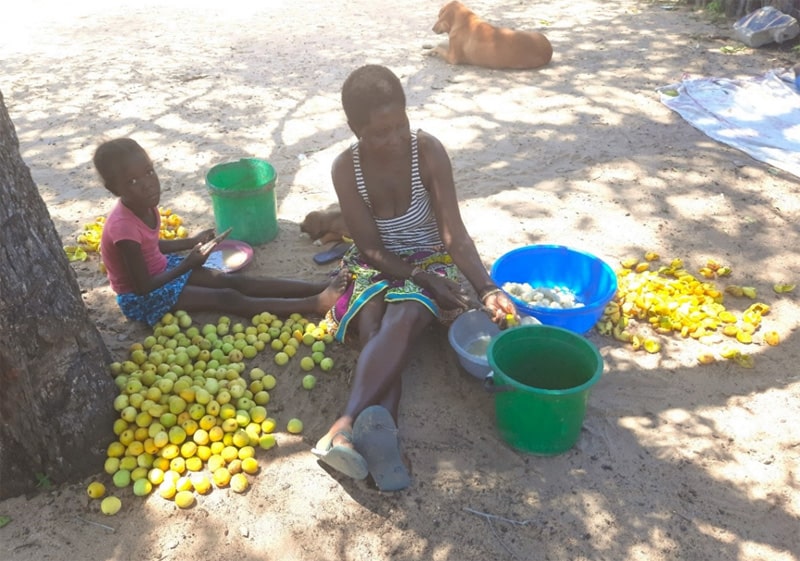
INITIAL SITUATION
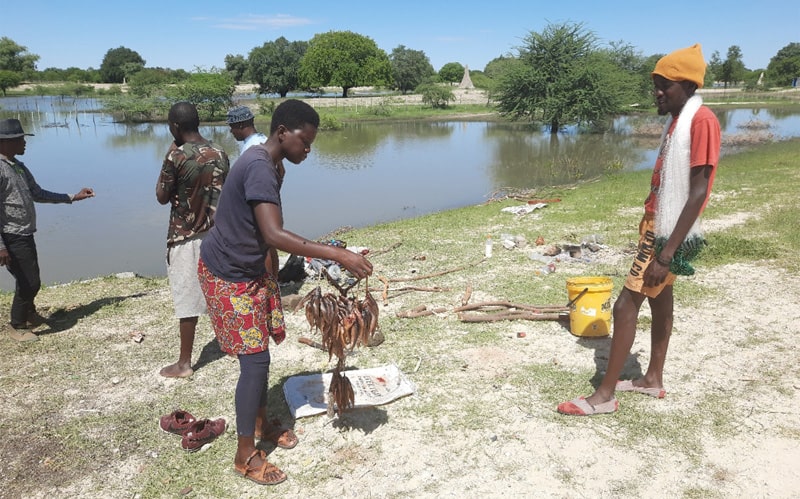
The initial inspection by our LNW team in 2023 revealed that the region in OVAMBOLAND has dam structures and a canal system fed by the nearby KUNENE border river, which forms the border with Angola and supplies the entire area with water. During the rainy season, it is not uncommon for the KUNENE River to flood, prompting the local population to catch fish from the temporary ponds created by the floods to secure food.
This method of fishing can only be carried out for about 1 to 2 months a year, depending on rainfall. To reduce dependence on the rainy season, a well system is planned to provide fresh water daily for a fish pond. The excess water from the well will be channeled to a vegetable garden, ensuring no water is wasted and maximizing the program’s benefits.
During the LNW inspection, it was noted that the water accumulating in the temporary ponds was dirty and murky, with no natural freshwater inflow. This resulted in dead fish being found in the water, which the population also collected.
LNW – PROJECT TEAM
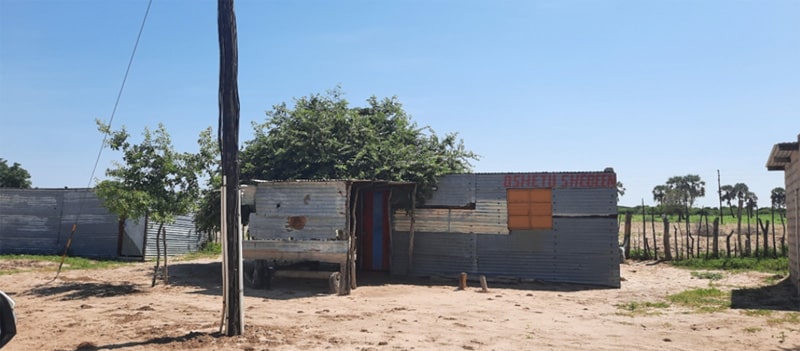
The project started in September 2023 with an initial survey on the general water supply for the population. In May 2024, the LNW team researched water usage regulations and gathered information from various drilling companies. The drilling offers have been obtained, and a decision will now be made on which company will carry out the drilling.
Team Members: Gabriele Stuck & Dietmar Stuck, Israel Kondjashili
Project Duration: September 2024 – July 2025
Location of the property: WATER & FOOD in Omuthya – WEST Village
PROJECT GOAL: WATER FOR PEOPLE
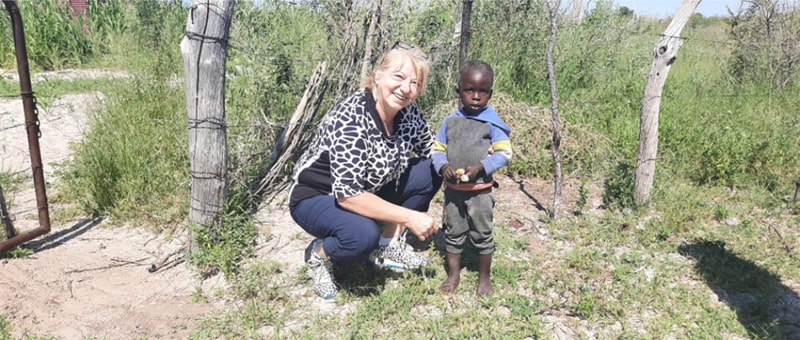
With the implementation of the LNW project WATER & FOOD in ONEKWAYA – WEST Village, we aim to first provide access to DRINKING WATER for the surrounding population of 185 women and 143 men and their children. The project will begin with the construction of a well and a drinking water extraction station for the villagers.
In OVAMBOLAND, the population’s drinking water supply, especially in rural areas, often comes from rivers or ponds. Even the canal system, which is fed by the Kunene River, provides river or rainwater, which cannot be classified as drinking water. Therefore, building a well system for the people of Omuthya – WEST Village would be a valuable contribution for future generations.
WATER FOR ANIMALS
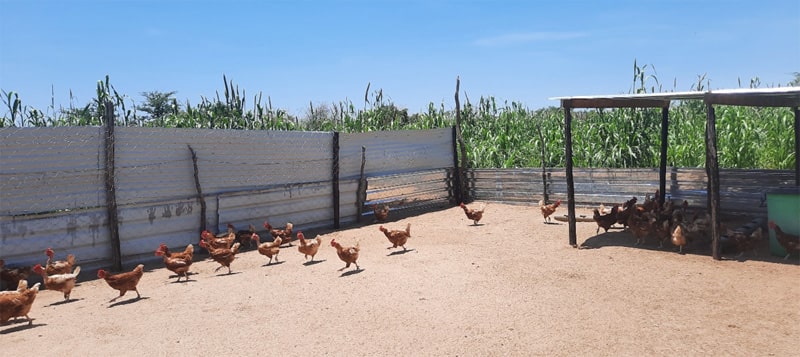
For LNW, education is the key to success, and with the project WATER & FOOD in Omuthya – WEST Village, we want to create a fish farming training model in the second phase. Training young people will provide the foundation for fish farming businesses to develop in the Omuthya region and, later, across OVAMBOLAND.
Fish farming is currently impossible in the area because there is no well system for a facility with three different water supplies. Experience has shown that local attempts to engage in fish farming have failed due to the lack of fresh water with both inflow and outflow, which is essential for long-term success. The water in the ponds, made up of accumulated rainwater, is dirty and oxygen-poor and is not suitable for producing healthy fish food.
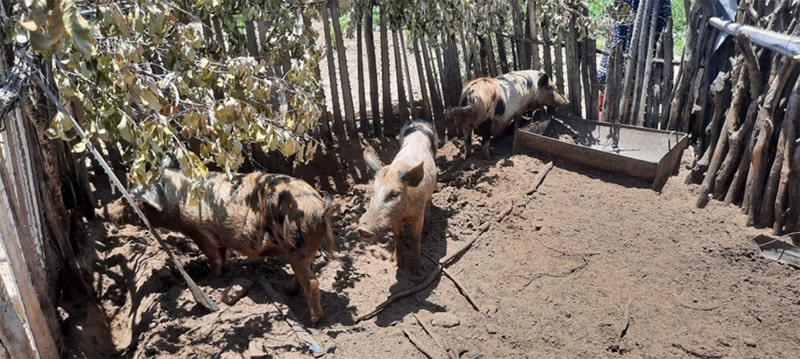
In addition to fish, chickens, goats, and pig farming are also essential food sources for the population. These animals will also be supplied with water from the planned facility. These simple animal pens consist only of a wooden fence with no shelters, making the animals particularly vulnerable to midday heat. It is not uncommon for pigs to die from heatstroke. During the LNW team’s initial inspection, it was also noted that the animals were not sufficiently supplied with water.
WATER FOR PLANTS

To ensure that all three areas of our projects are implemented, LNW ensures that no water is wasted from our facilities. The excess water from the water extraction station, which flows into the fish pond, will subsequently be used for vegetable growing and tree planting.
In OVAMBOLAND, in addition to the usual vegetables such as maize, potatoes, and onions, spinach and beans are also grown. Whether vegetable farming can be carried out often depends on the availability of water.
With our project, the water used in the fish pond will be channeled via an overflow pipe to a vegetable garden. From there, the women will be able to water their vegetable plots with watering cans.
By implementing this water cycle model, we can ensure that the available water resources are used to the maximum and that no water is wasted.
WELL SPONSORS: JB/LJ Aurach Presentation
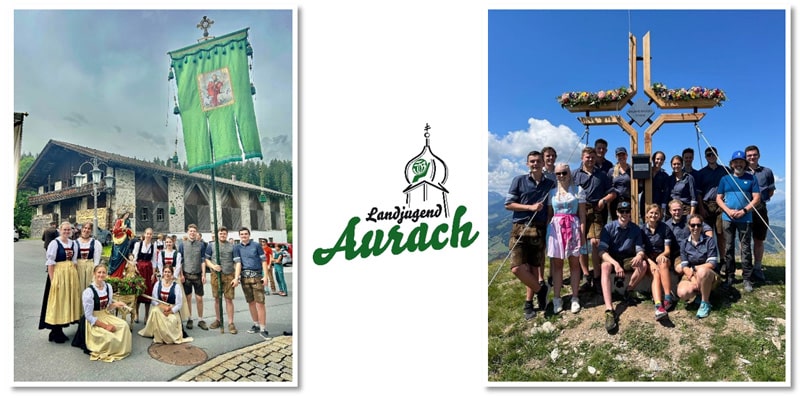
We, the JB/LJ Aurach near Kitzbühel, are a dynamic and committed association in a small village with strong community ties. Our group consists of young people aged 14 to 35 who are actively involved in shaping rural life. Our vision is to create a bright future for rural areas and competently represent the interests of young people. In our vibrant community, we encourage and support the personal development of our members, offering them the opportunity to contribute their own ideas.
We want to be a diverse and active community where participation brings fun and joy. We stand for active leisure, personal development, and the shaping of rural areas. Our organization is primarily based on the voluntary commitment of elected leaders, and we work to ensure that the voices of our members are heard in society.
The foundation of our activities is teamwork, gender equality, democracy, tolerance, self-responsibility, sustainability, and social engagement. Our focus areas include general education, agriculture, environment, culture, tradition, sports, society, and international activities.
Although we are a small group with only about 20 active members, we have set ourselves an ambitious goal: to create a project that makes a tangible difference. We are fortunate in Tyrol to have clean drinking water and enough food. Therefore, we want to give hope to people who are not as fortunate by offering them the opportunity for a better quality of life.
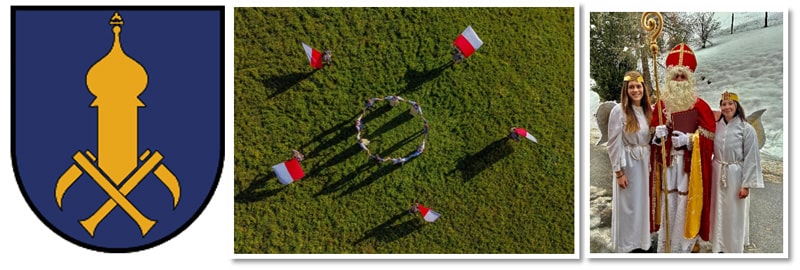
With the support of the organization Life Needs Water (LNW), we have the opportunity to bring this meaningful project to life. Our project “Source of Life – Because Every Drop Counts!” aims to build a drinking water well in the town of Onekwaya West in Namibia, making a sustainable contribution to improving living conditions in the area.
This project plans to build a drinking water well in the town of Omuthya, Namibia, using the funds we have collected. We expect our collaboration with LNW to continue to be positive and cooperative, as they have already provided us with significant support.
Together, we want to bring hope and a better quality of life to the people of Omuthya West by giving them access to clean drinking water. We are convinced that every drop counts and that our commitment can make a lasting difference.
